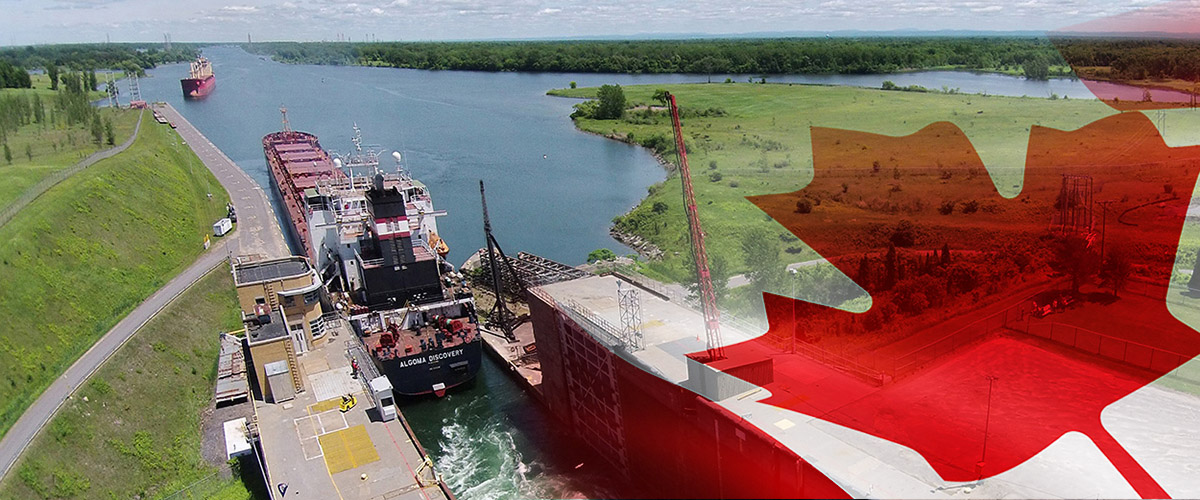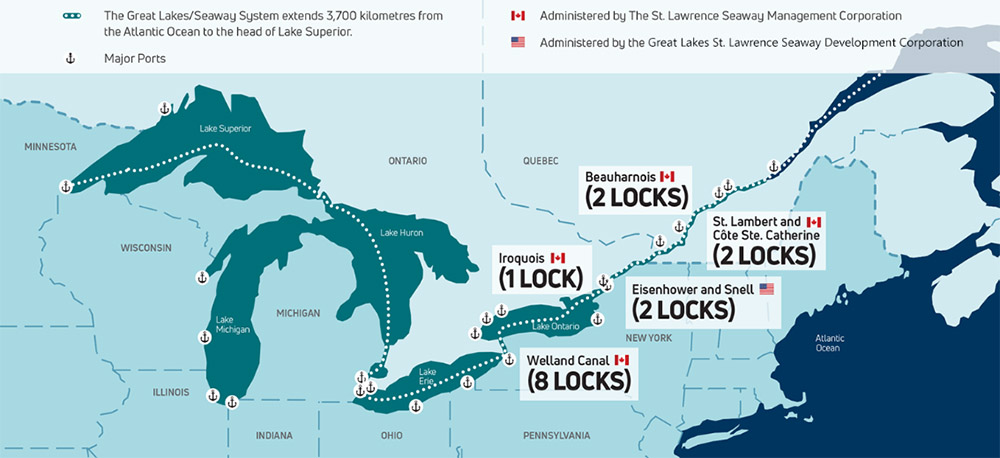
A Bold Move for Economic Independence: The Canadian Seaway Bypass
By Kevin Bessy
The United States owns two of the 15 locks on the St. Lawrence Seaway. A Canadian federal project aimed at extending the North Channel and reopening the Cornwall Canal could provide a bypass for the two U.S.-controlled locks (Snell & Eisenhower), allowing Canada full control of the Seaway and access to and from the Great Lakes to the Atlantic Ocean. This would give Canada significant leverage over U.S. Midwest and Great Lakes manufacturing and agriculture while ensuring Canadian access security to the Atlantic, creating jobs, and protecting existing industries.
The St. Lawrence Seaway directly serves an eight-state, two-province region that accounts for one-quarter of the U.S. gross domestic product (GDP) and half of North America’s manufacturing and services industries. By pursuing this project, Canada could generate additional revenue and, if executed strategically, could partner with Maersk and Denmark to help fund the initiative, which includes plans to expand the existing locks to accommodate more extensive commercial shipping. Such a partnership with Denmark could also allow Canada to support development projects in Greenland.
Another potential consideration is extending pipelines to a transfer station on one of the Lakeshores, thereby opening the St. Lawrence Seaway corridor for natural gas and/or oil exports. Bypassing the two American locks may not be as daunting as it seems. Much of the engineering knowledge for this project exists in archived documents since the canal remained operational during the construction of the Robert Moses Power Dam. This effort could be completed within approximately two years. The expansion or duplication of the existing locks has been under exploration for several years, and now is the right time to act. If external financing is not feasible, the government should consider using modern monetary theory (MMT), as Canada is monetarily sovereign.
Prime Minister Trudeau recently posted about Alto, a high-speed rail project. My thoughts centre on how to grow the economy. We could take a lesson from the U.S. approach during the Eisenhower administration. How can we strengthen Canada’s infrastructure? How can we ensure means for growth? How can Canada increase exports and GDP, create jobs, and secure its future? We must establish a robust infrastructure to ensure our goods reach the global market. For a secure future, these efforts must begin today.

ABOVE: Over 200 million tonnes of cargo travel annually on the 3,700 km Great Lakes/Seaway System “marine highway”. (SOURCE: https://greatlakes-seaway.com/)
We should create jobs and provide the means for industries to deliver their products domestically and internationally. Sales of inexpensive hydroelectric power to the U.S. should be decreased and redirected to attract industrial manufacturing and support national needs. We should offer incentives to encourage development within Canada, attract foreign investment, and reduce taxes on raw materials sourced domestically for products manufactured in Canada. Infrastructure development is essential; without it, no matter how many policies we enact, industries will struggle to grow or prosper. The job creation from these projects will also lead to additional job growth in supporting sectors that supply the necessary goods for construction and support services for operation.
Canada possesses everything required to establish a strong industrial complex. Implementing corporate tax reductions, contingent on a percentage of these tax breaks being reinvested into Canada, to help ensure growth and innovation. Canada could also lay the groundwork for new alliances and attractive trade agreements with the EU, Britain, Australia, India, and other nations that would also be looking to lessen their reliance on the U.S.
In conclusion, Canada needs a proactive leader to unify and steer the country in the right direction. Although a public high-speed rail transportation project can create jobs in the short term, it may not lead to substantial and sustainable GDP growth, attract and develop industries, or boost exports. Instead, it will become an additional tax burden for Canadian citizens and consume valuable time and resources.
Photo: greatlakes-seaway.com











